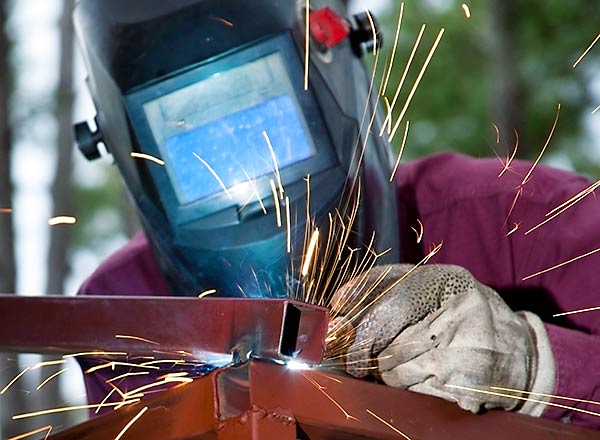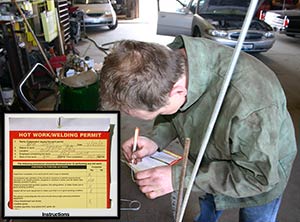
Where There’s a Weld, There’s a WayThe nearly 74,000 residents served by the Bolingbrook Park District have access to a wide variety of facilities and activities among the 49 parks on 1,087 acres in the district. In addition to three greenways trails and the two community centers, a water park, a nature center and a par 32 golf course, the most popular facilities might be the ones serving the Bolingbrook Soccer Club.
Soccer is one of the most popular activities the agency offers. Two soccer complexes with 18 fields serve some 750 players, ranging in age from four to adult, giving the fields a workout with both a spring and fall season.
With such heavy usage, the movable goals were showing some wear and tear that needed attention before the 2013 season started. “It’s a rule for the games that the league checks the goals to make sure they are properly secured,” says Chris Martner, Superintendent of Buildings, Grounds, and Natural Resources. “Although the goals get checked before every game, our staff checks every week to make sure they are properly secured, in compliance with Zach’s Law.” The law, she explained, was passed in 2011 to prevent movable soccer goals from tipping over and was named in honor of a Vernon Hills boy killed in 2003 by a falling goal.
During an off-season inspection, the welds on six aluminum goals showed signs of cracking, so the goals were pulled off the field. It would cost an estimated $9,000 ($3,000 per set) to replace them. Could the goals be repaired without running afoul of Zach’s Law?
“We have a great relationship with Gerrit Prince, our PDRMA Risk Management Consultant,” explains Martner. “I can check with him anytime I have a question about safety issues — he’s very responsive and this is clearly a risk management issue. Gerrit said we would not be modifying the goals but repairing the existing welds, so it was okay to repair the welds as a safety issue. Of course, we gave PDRMA the heads up that Tony Brandolino, our mechanic, would be working with a contracted vendor in our shop, because we don’t have the ability to weld aluminum. To prepare, we had the Hot Work Permit paperwork in order and obtained the necessary insurance from the vendor.”
  PDRMA’s Hot Work Permit System reduces the possibility of accidental fires when welding or using torches. Members should use hot work permits when indoor maintenance, remodeling or construction work involves cutting torches or welding equipment. The system is a great way for members to reduce the possibility of an accidental fire before, during and after hot work, and the permit confirms the area is clear of combustibles and requires an observer in addition to the welder. PDRMA’s Hot Work Permit System reduces the possibility of accidental fires when welding or using torches. Members should use hot work permits when indoor maintenance, remodeling or construction work involves cutting torches or welding equipment. The system is a great way for members to reduce the possibility of an accidental fire before, during and after hot work, and the permit confirms the area is clear of combustibles and requires an observer in addition to the welder.
“Welding and cutting operations for our members are done so infrequently that they are a special hazard that needs to be managed,” explains Gerrit Prince, PDRMA Risk Management Consultant. “The hot work permit system provides guidance on the precautions our members need to follow to minimize the fire exposure to property that this type of activity presents.”
“Both the contractor and our mechanic, Tony, made sure the area was secure before welding and then inspected the area when the weld was complete to make sure there were no embers, or other combustibles,” says Martner. “The soccer goals have been placed back out in the park, and kids are able to play with goals that are sturdy and safe.”
PDRMA Resources
|

